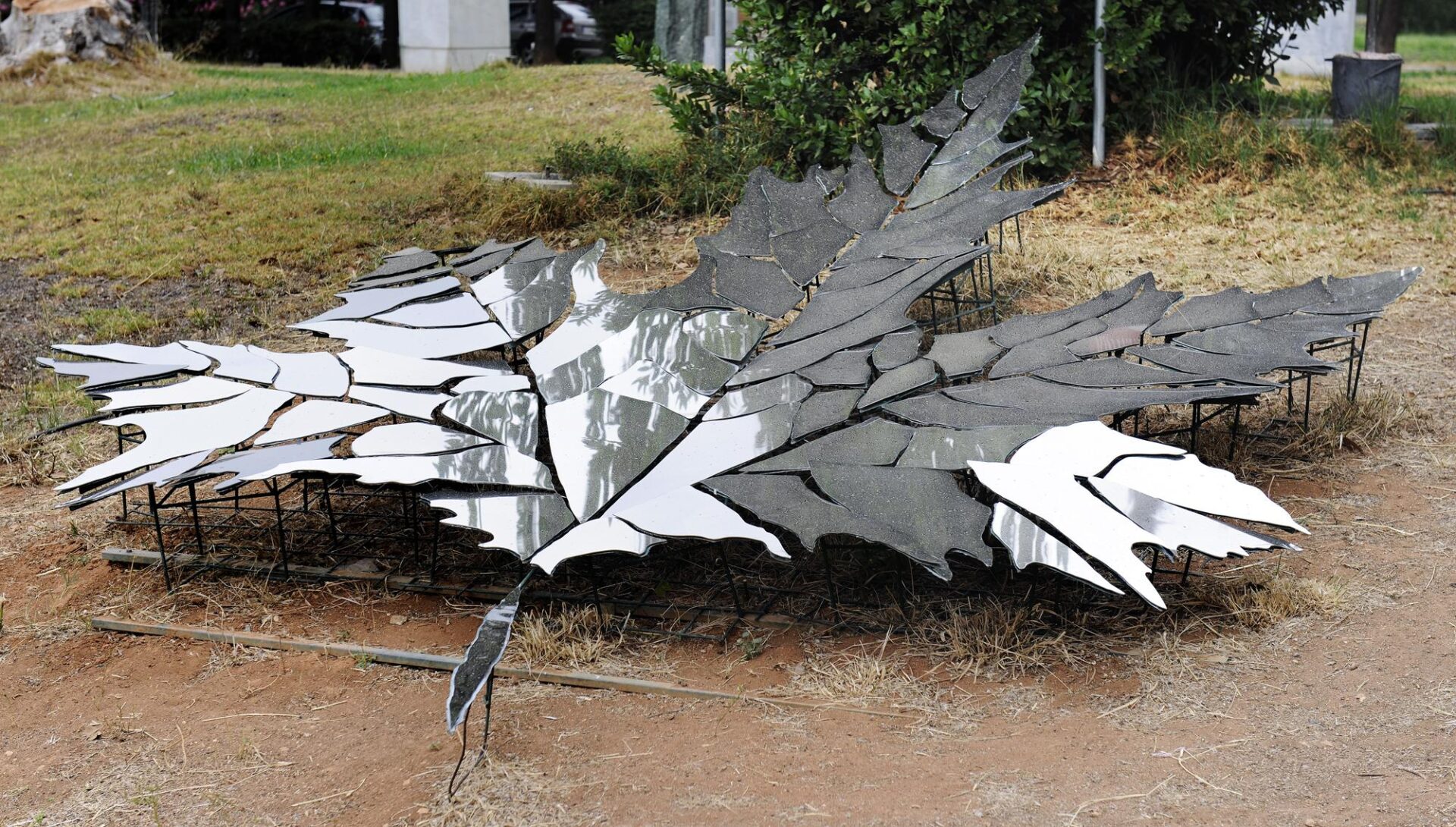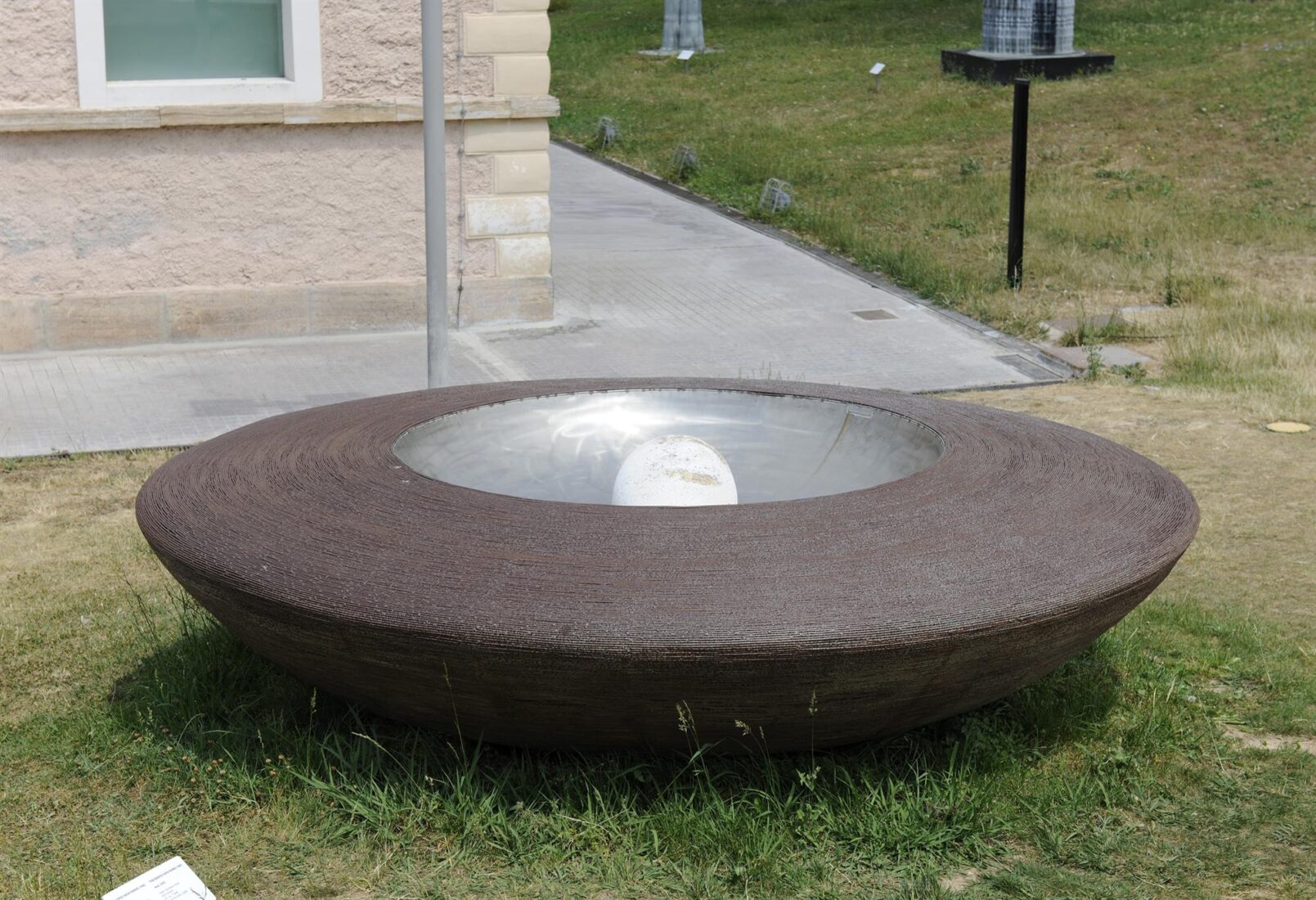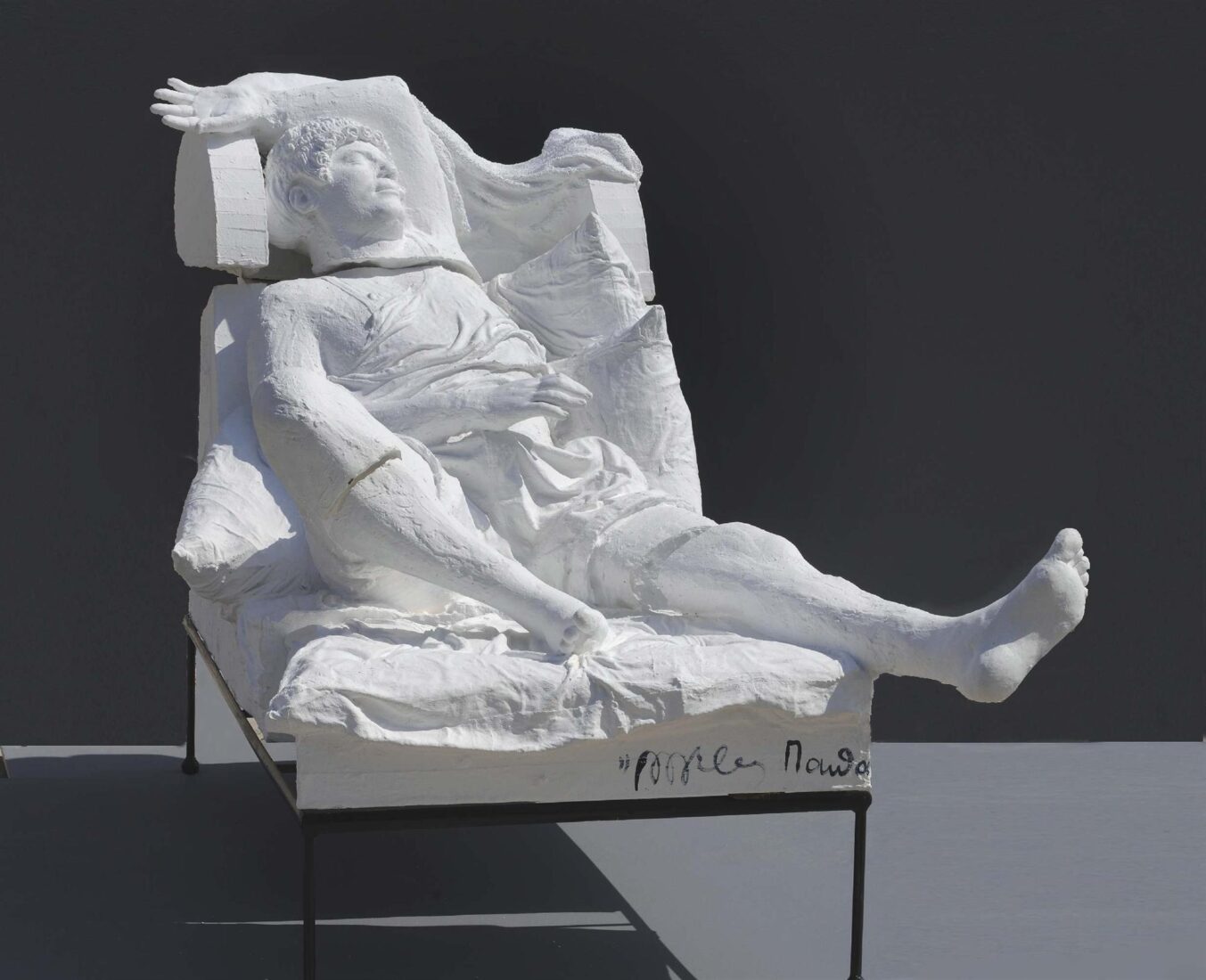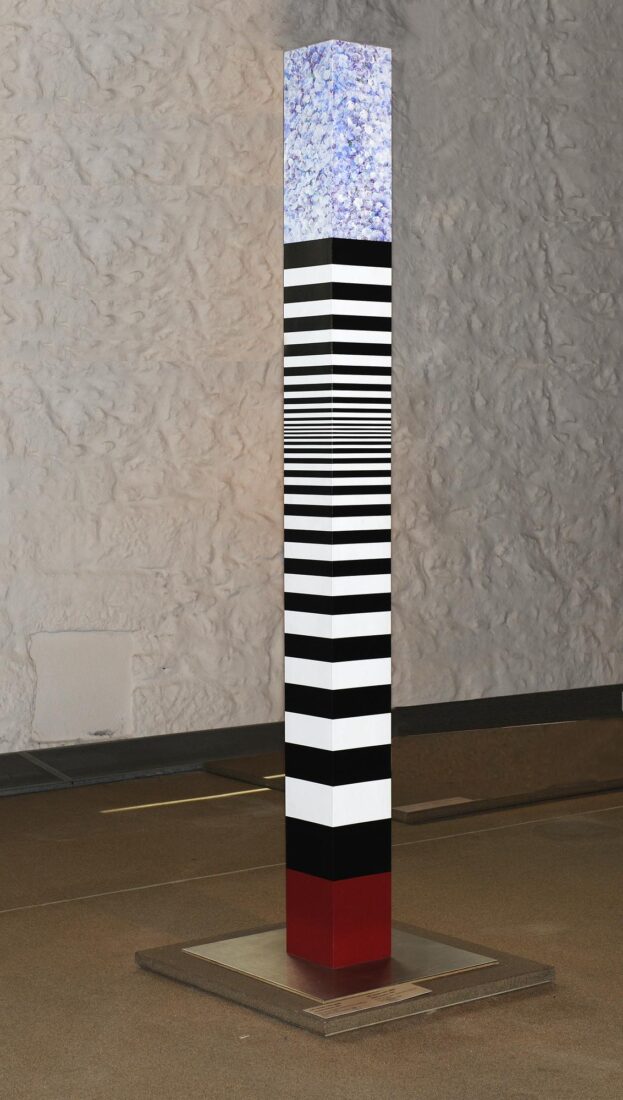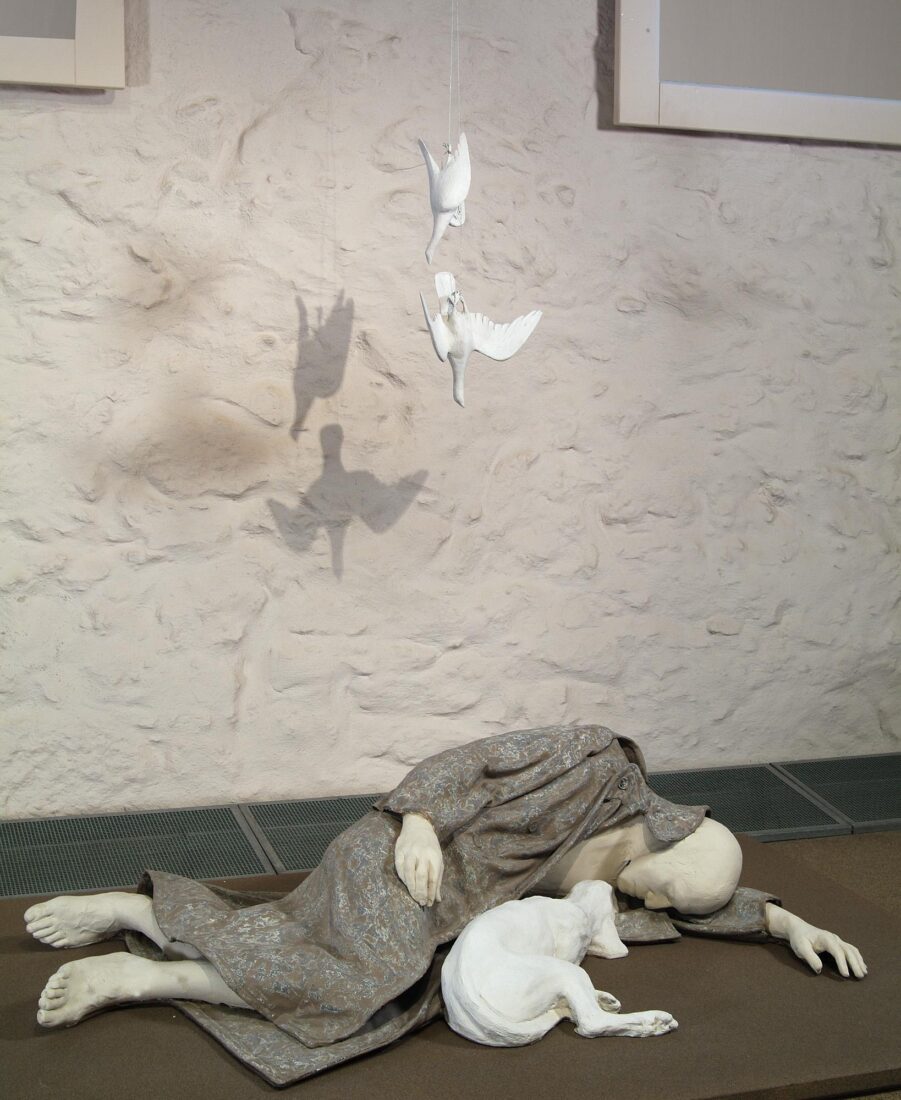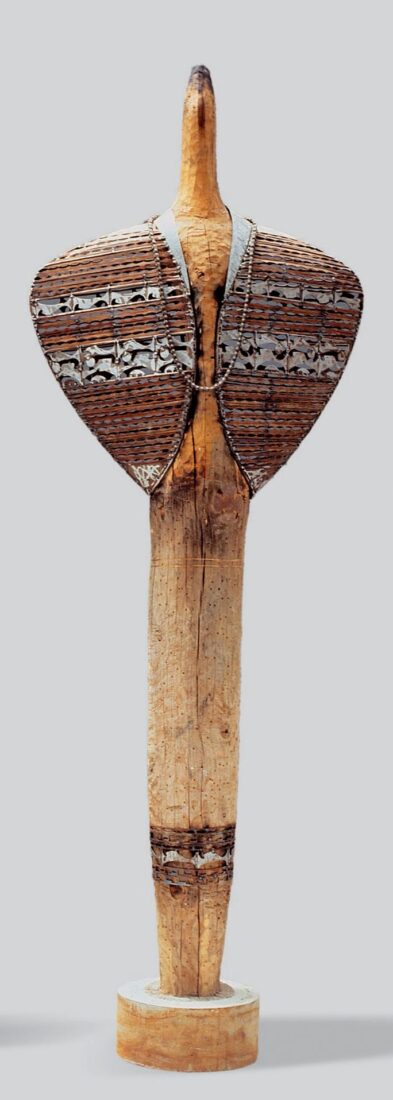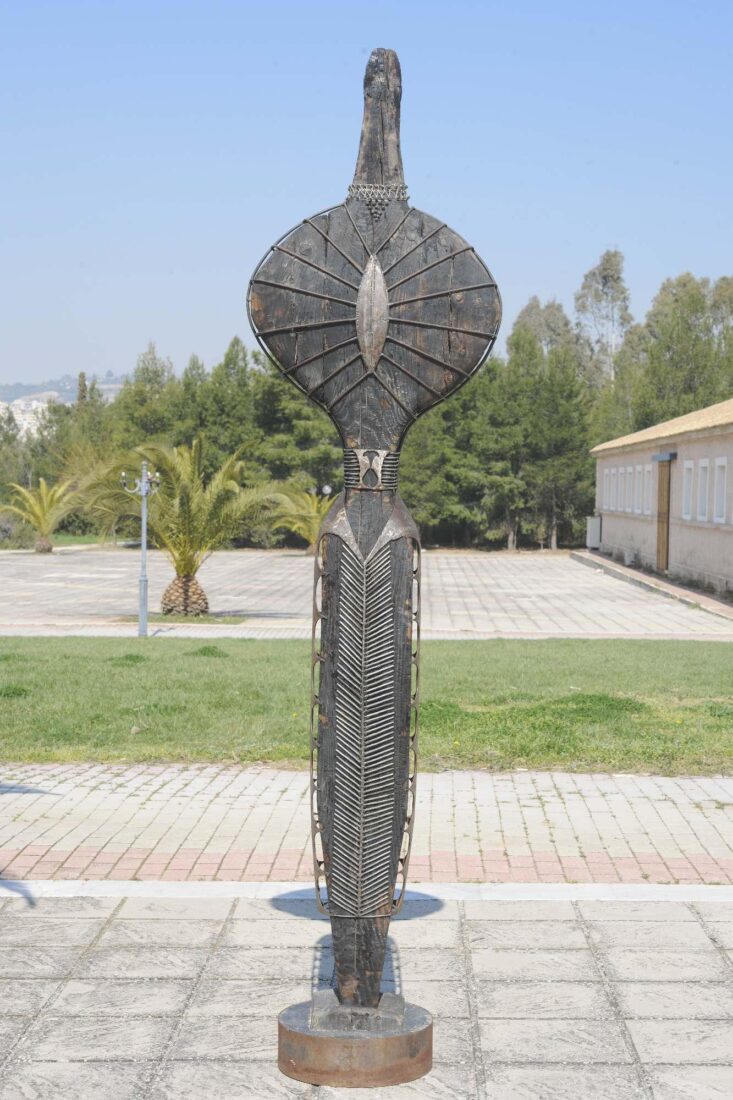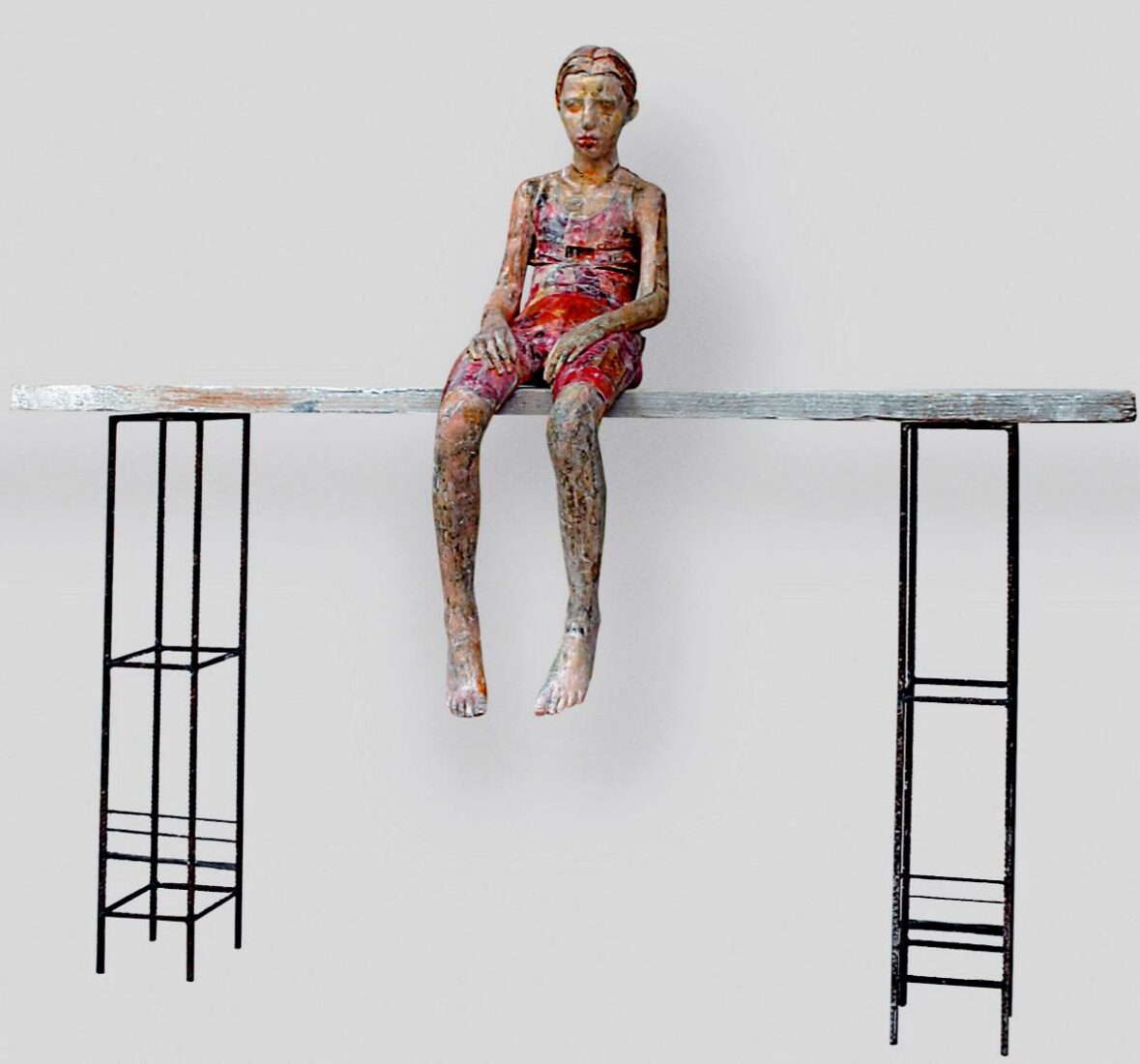The work is inspired by C.P. Cavafy’s poem “Artificial Bloom”
C.P. CAVAFY
Artificial Bloom
I do not want real narcissi – neither lilies
Nor real roses appeal to me
They only adorn platitudinous and common gardens
Their flesh inculcates bitterness, weariness and grief to me
Their perishable beauty bores me
Give me artificial blooms – glories of porcelain and metal –
That do not wither and rot, with images that do not age
Blooms of the marvelous gardens of another land,
Where Theories, Rhythms and Knowledge reside
I love blooms made of glass or gold,
True gifts of faithful Art
Painted with colours more lovely than the natural,
Elaborate with nacre and enamel,
With ideal leaves and branches
Their grace taken from wise and purest Elegance
They did not grow dirty in dust and mud
If they have no scent, we shall pour fragrance
(And) We shall burn sentimental scents before them
Translated by Yannis Kaloudis
from the exhibition catalogue
C.P.Cavafy “Pictured”. 40 Contemporary Greek Creators
Pantelis Chandris studied graphic arts and painting, but his enterprise has a clear conceptual direction that is expressed primarily through constructions and manipulations of the space. These constructions and spatial manipulations draw either on nature or on human needs and pursuits connected to the conscious and unconscious. They are fashioned with the help of a visual reality that nonetheless has a symbolic character.
The male figure in an overcoat appeared for the first time in the trilogy “Conversations with a Wintry Figure”. It then became the basic figure in a series of pieces bearing the general title “States of Being”. “Hunter” comes from this series.
According to Chandris, the hunter-predator is identified with the Ego, the dog, the essential hunter, with the Superego, and the bird with the Id. Thus he gives form to a psychoanalytical structure as Freud analyzed it. The symbolic combination of these three figures enables Chandris to express a variety of conscious and unconscious states of being while allowing the viewer to interpret the work from a personal perspective.
Thodoros Papayannis made the human figure practically his exclusive subject, but liberated from any trite naturalistic stylization. His knowledge of ancient Greek civilization and the broader Mediterranean region, Greek folk tradition and his post-graduate studies in Paris later on, nourished, by the stimuli they offered him, the formation of his style.
Using stone, marble, bronze and clay, he gave form to his earliest, tectonic compositions, which were formed by means of geometric volumes. From around the middle of the Eighties his tendency toward ever increasing schematization has been expressed through the use of more curved lines and he has thus been led to larger-than-life-size totemic figures, references to the imposing divinities of ancient civilizations which take their form through a combination of wood, iron, polyester fibers, and various metals, as well as readymade materials that are reused.
One particular entity of his work is the series “My Phantoms”, consisting of figures tragic and at the same time repulsive, made of old wood and iron, remnants of sections of the National Technical University burned by vandals in 1994, which express the artist’s protest against violence and waste.
Thodoros Papayannis made the human figure practically his exclusive subject, but liberated from any trite naturalistic stylization. His knowledge of ancient Greek civilization and the broader Mediterranean region, Greek folk tradition and his post-graduate studies in Paris later on, nourished, by the stimuli they offered him, the formation of his style.
Using stone, marble, bronze and clay, he gave form to his earliest, tectonic compositions, which were formed by means of geometric volumes. From around the middle of the Eighties his tendency toward ever increasing schematization has been expressed through the use of more curved lines and he has thus been led to larger-than-life-size totemic figures, references to the imposing divinities of ancient civilizations which take their form through a combination of wood, iron, polyester fibers, and various metals, as well as readymade materials that are reused.
One particular entity of his work is the series “My Phantoms”, consisting of figures tragic and at the same time repulsive, made of old wood and iron, remnants of sections of the National Technical University burned by vandals in 1994, which express the artist’s protest against violence and waste.
Vally Nomidou studied painting. Her practice, however, is a combination of painting, sculpture, and environment in three-dimensional compositions crafted from all manner of material: wood, paper, plaster, paint mediums, cardboard, newspapers, and fabric. Human figures drawn from everyday life are a characteristic part of her enterprise. These figures define the space and on their own create a specific environment with minimal auxiliary attributes.
The little girl in “Bien venue” is one of Nomidou’s familiar, quotidian figures that she exhibited in Medusa Gallery in 2003. Melancholic and isolated in an invisible environment that is new and obviously unknown, the girl balances on a wooden board, the sole feature that denotes the space.
